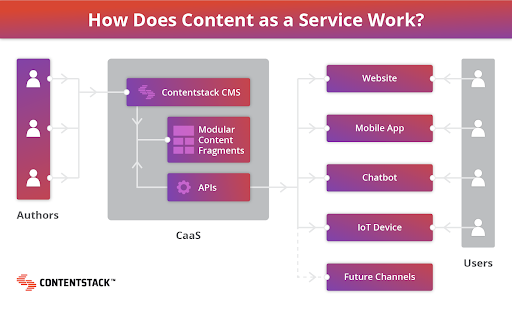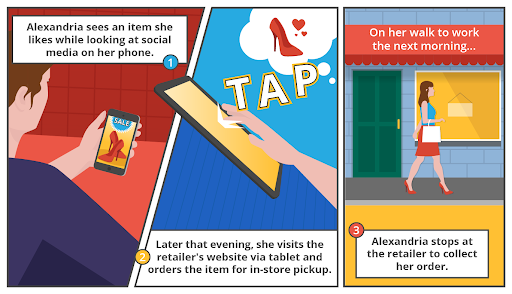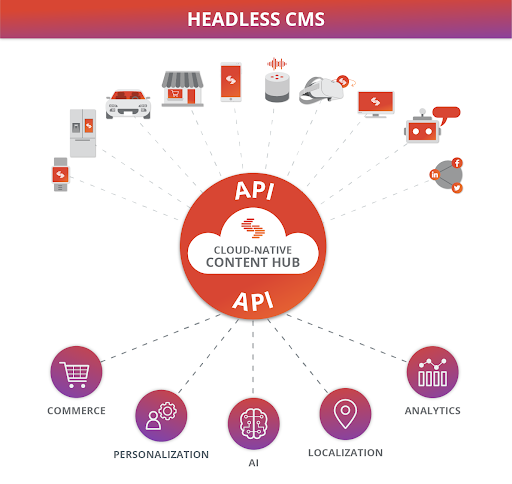Modular blocks: Build and deploy at light speed with modular content

There’s nothing more frustrating than a content strategist spending their days not strategizing — and often not creating content at all!
In the world of always-on and ever-expanding channels, content strategists are often stuck tweaking content and publishing it to channel after channel. Any time a new content campaign comes out, they wash, rinse, and repeat the process. We don’t blame you for wanting to break the cycle. That’s where modular content blocks come in.
Here’s everything you need to know about modular content blocks, why they’re vital to breaking the cycle of creating more content instead of better content, and how to create and deploy better content at record speed with Contentstack’s Modular Blocks.
What are modular content blocks?
In the context of a content management system (CMS), a content block is a field or a group of fields that hosts specific types of content such as videos, images, text, code, products and so on.
Using content blocks enables content to be managed modularly. That means that each block can be updated, moved, deleted and otherwise managed individually without affecting the rest of the website or page where the content lives. With modular content blocks, entire pages can be generated in seconds by pulling together the right blocks. Updates are automatically applied to every instance of the block, no matter where they’re located.
Why does modular content matter?
Traditional, monolithic CMSs store content by page instead of by type. While this makes it easy to send content to a single endpoint, it also makes it hard to update content or send it to a different endpoint without going through the steps of republishing the entire page.
For example, if you’re using a traditional CMS such as WordPress, publishing the same content to both your website and your smartwatch app means creating and publishing two slightly different versions of that content. But a modern headless CMS can change all that.
A headless content management system relies on application programming interface (API) technology to unite the modular blocks where content is stored. This enables content to be delivered as a service — instead of as a static unit — to any channel, device, or platform via API.

Why does the shift to content as a service (CaaS) enabled by modular content blocks matter? You’re about to find out.
5 key benefits of CaaS delivered via modular blocks
Here are five ways modular blocks help businesses keep up in an ever-changing digital world by enabling content to be delivered as a service.
Faster publishing
With modular blocks, you can tweak content quickly and without the risk of breaking any structure or functionality. Even better, content strategists can make and publish changes without having to wait for help from developers or designers for last-minute updates or launching time-sensitive campaigns.
Improved scalability and flexibility
Another benefit of using modular content blocks to deliver content as a service is flexible content that can be quickly located, optimized and published hundreds of times on any channel. This flexibility means your content can scale to keep up with your content needs — without scaling the size and expense of your content team to match.
Personalized, omnichannel content distribution
By 2030, it’s thought that as many as 125 billion smart devices will be online. That works out to every consumer owning about 15 internet-enabled devices.
Looks like you’re about to have a lot of publishing to do — across a lot of different devices and channels. In fact, the shift to delivering content as a service is a result of the introduction of new digital channels and the devices people use to access them.
Today, consumers want content that’s available around the clock, relevant to their needs and optimized for specific experiences. This is why it’s vital that businesses implement modular blocks that turn their content types into individual, flexible assets that can be personalized, optimized and served to various websites, mobile apps, voice-activated devices and more.

Save money on content creation
Modular content blocks boost employee morale and save salary dollars by making already-created content highly reusable.
Content blocks put an end to endless tweaking, copying, reformatting and republishing of content campaigns for each channel or experience. They enable content creators to look ahead at what’s new and what’s next instead of spending hours on mundane rework. While this might not sound like the biggest benefit, the savings can be considerable.
Take, for example, the time spent formatting content after it’s been translated into a different language — a must for any business that wants to compete on a global stage. With a CMS that empowers employees to reuse content instead of recreating it from scratch, a business can reduce time spent on post-translation formatting by as much as 50%.
Improved publishing consistency and quality
When the content you enter into a reusable block is published according to your content guidelines, the first time around, you won’t have to worry about its consistency even when it’s republished the hundredth time around.
The automation aspect of modular content blocks eliminates the introduction of human error. And when you use these content blocks in conjunction with a CMS that includes a rich set of publishing features such as access controls, approval workflows, versioning, rollback, and more, you can be even more confident in the consistent quality of your content.
Create and deploy content lightning fast with Contentstack’s modular blocks
In order for content to be successfully delivered as a service, the modular blocks in which it lives have to be in a database where they aren’t attached to anything else, such as code or design that governs how they perform or look.
This independence makes the content easy to find and flexible, so it can be optimized quickly and displayed for various consumer channels.
A headless content management system separates the front-end presentation layer (the head) of content from its back-end storage and programming (the body). This empowers marketing teams to create and manage content while designers and developers build the best front-end interface to display it. Finally, an API is used to call and serve the content the same way it would any other service.

Modular blocks are one of Contentstack’s most powerful features. They provide developers with infinite possibilities for customization, while making it painless for content managers to create and arrange content components on their websites and apps without compromising design integrity.
For a sneak peek at how easy it is to use Contentstack’s modular blocks, check out this complete walkthrough we created for developers.
And for even more information about how Contentstack serves brands like Best Buy, Cisco, Dell, Ellie Mae, Miami HEAT, Walmart and more, get your hands on this free datasheet that covers everything you need to know about Contentstack’s features, our major business benefits and what sets us apart from the competition.
About Contentstack
The Contentstack team comprises highly skilled professionals specializing in product marketing, customer acquisition and retention, and digital marketing strategy. With extensive experience holding senior positions at renowned technology companies across Fortune 500, mid-size, and start-up sectors, our team offers impactful solutions based on diverse backgrounds and extensive industry knowledge.
Contentstack is on a mission to deliver the world’s best digital experiences through a fusion of cutting-edge content management, customer data, personalization, and AI technology. Iconic brands, such as AirFrance KLM, ASICS, Burberry, Mattel, Mitsubishi, and Walmart, depend on the platform to rise above the noise in today's crowded digital markets and gain their competitive edge.
In January 2025, Contentstack proudly secured its first-ever position as a Visionary in the 2025 Gartner® Magic Quadrant™ for Digital Experience Platforms (DXP). Further solidifying its prominent standing, Contentstack was recognized as a Leader in the Forrester Research, Inc. March 2025 report, “The Forrester Wave™: Content Management Systems (CMS), Q1 2025.” Contentstack was the only pure headless provider named as a Leader in the report, which evaluated 13 top CMS providers on 19 criteria for current offering and strategy.
Follow Contentstack on LinkedIn.







.svg?format=pjpg&auto=webp)
.svg?format=pjpg&auto=webp)
.png?format=pjpg&auto=webp)






.png?format=pjpg&auto=webp)


